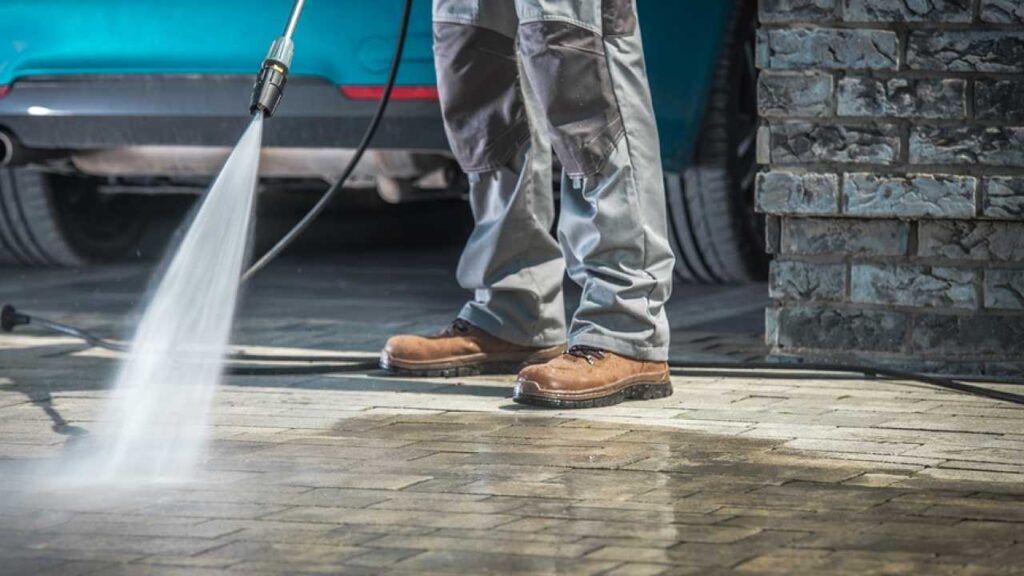
Sealing concrete
Concrete is a popular material for construction and home improvement projects due to its durability and versatility. However, if it is not sealed properly, it can crack, stain, and lose its shine over time. Sealing concrete is essential to protect it from harsh weather conditions and extend its lifespan. This blog post will discuss the most common mistakes to avoid during concrete sealing in Melbourne.
What to Not Do During Concrete Sealing?
Not Cleaning the Surface Before Sealing
When sealing concrete in Melbourne, it is essential to clean the surface thoroughly before applying the sealant. This is because any dirt, grease, or other contaminants on the surface can prevent the sealant from adhering properly, resulting in a poor finish or even failure of the sealant.
Not preparing the surface can also affect the longevity of the sealant, as the contaminants can eventually break down the bond between the concrete and the sealant. To avoid this, the surface should be cleaned using a high-pressure washer or a degreaser and thoroughly rinsed to remove all debris.
Applying the Sealer Too Thickly
Applying the sealer too thickly is another common mistake when sealing concrete. While it may seem like applying a thick layer of sealer will provide better protection, it can have the opposite effect.
A thick sealant layer can take longer to dry, resulting in a hazy or cloudy appearance. It can also cause the sealant to crack or peel over time, reducing its effectiveness. Additionally, a thick layer of sealant can trap excess moisture, which can cause damage to the concrete.
Therefore, it is crucial to follow the manufacturer’s application instructions and apply the sealant in thin, even coats. This will help to ensure that the sealant dries evenly, forms a strong bond with the concrete, and provides maximum protection.
Not Allowing Enough Time for the Sealer to Dry
Not allowing enough time for the sealer to dry is another common mistake when sealing concrete. This can result in several problems, such as tracking, smudging, or even damage to the surface.
Sealers can take several hours to days to dry completely, depending on the product and the conditions. It is important to follow the manufacturer’s instructions for drying time and avoid walking or driving on the surface until the sealant is fully cured.
If the surface is exposed to foot or vehicle traffic before the sealant has dried completely, it can cause the sealant to smudge or track, resulting in a discoloured or uneven appearance. In some cases, it can even damage the surface of the concrete, reducing its overall appearance and lifespan.
Not Testing the Sealer Before Applying
Not testing the sealer before applying it to the entire surface is another common mistake when sealing concrete. This can result in unexpected problems, such as discolouration, fading, or even a reaction with the concrete itself.
For that reason, it is vital to test the sealer on a small, inconspicuous surface area before applying it to the entire surface. This will help to determine if the sealer is compatible with the concrete and if it will produce the desired finish.
Testing the sealer can also help to identify any potential issues with the surface, such as staining, efflorescence, or cracks, that may need to be addressed before the sealant is applied.
Not Applying a Second Coat
Not applying a second coat of sealer is a common mistake when sealing concrete. While a single coat of sealer may provide some protection for the surface, a second coat can significantly enhance the performance and longevity of the sealant.
A second coat of sealer can help to provide better protection against water and other environmental factors, as well as enhance the colour and appearance of the surface. Additionally, a second coat can help to fill in any missed areas from the first application, resulting in a more uniform and even finish.
Hence, you must follow the manufacturer’s instructions for the recommended number of coats and the drying time between coats. In some cases, a third coat may be necessary to achieve the desired level of protection and appearance.
Using the Wrong Type of Sealer
Using the wrong type of sealer is a common mistake when sealing concrete. Different types of concrete have different characteristics, and the type of sealer you use should reflect the specific needs of the surface.
For example, concrete surfaces with high levels of moisture or chemical exposure may require a different type of sealer than surfaces that are for decorative purposes. Using the wrong type of sealer can result in poor performance, discolouration, or even damage to the surface.
As a consequence, it is important to consider the specific needs of the concrete surface when choosing a sealer. Factors such as the age of the concrete, the type of environment, and the requirement of the finish should all be taken into account.
Not Protecting the Surface from Stains
Not protecting the surface from stains is a common mistake when sealing concrete. While sealing concrete can protect against moisture and other environmental factors, it may not protect against stains caused by oil, chemicals, or other substances.
It is crucial to take preventive measures such as placing mats or rugs in high-traffic areas or using a sealer that resists staining. In addition, prompt cleanup of any spills or stains can help to prevent them from becoming permanent.
In some cases, it may be necessary to use a specialised stain-resistant sealer or to apply multiple coats of sealer to provide adequate protection against staining.
Conclusion
Sealing concrete is an important step in protecting and maintaining its appearance. By avoiding these common mistakes, you can ensure a smooth and even finish that will last for years. If you are unsure about concrete sealing, consider hiring a professional from Premium Concrete Surfacing to ensure the best results.



